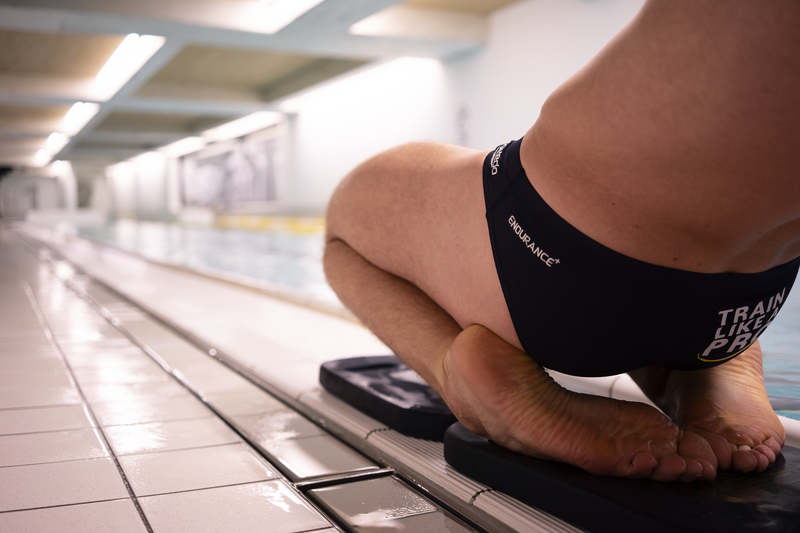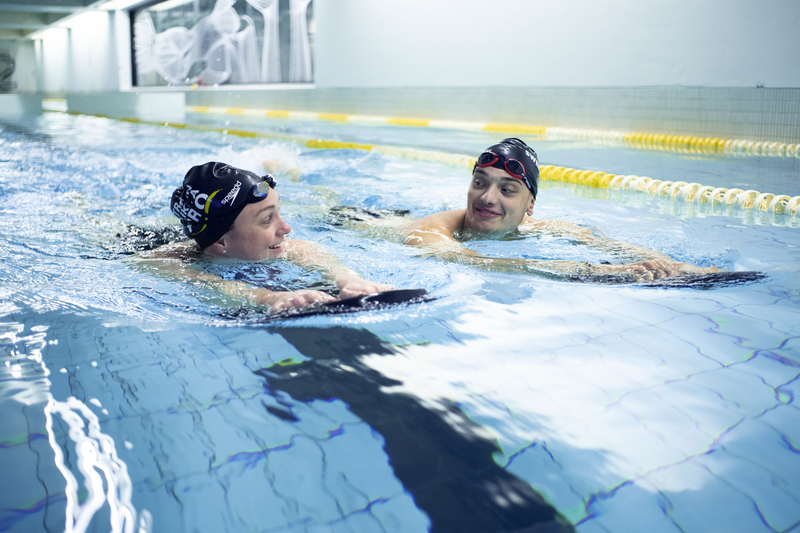Swimming blog - KICK How to make my kick kick-ass!
You may have wondered why someone else's kick is faster than yours? We are all different in this aspect, and not just between men and women. Your kicking strength and efficiency are determined by leg strength, flexibility and practice. It’s not difficult to explain and we have three hacks to make your kick stronger and more efficient.
1. Leg strength
Your legs need a certain amount of strength if you want to make your kick stronger. The leg muscles are big muscles and not only need more oxygen, but they need to be trained. As much as land-based training tones and strengthens the legs and core, there is no substitute for actually kicking in the pool. You can make them stronger with vertical, wall or underwater kicking.
Wall kicking is done against the end wall or side of the basin. It is static kicking, you don’t move. It is easy to kick here for a long time. It is also easier to kick like this with your head in the water, making you more streamlined. How to do this best can be found at SwimGym.com, and wall kicks are a great way to build kick endurance and strength.
Vertical kicking is another fantastic way to get your legs stronger. Here you kick “standing up”, vertically in the water with your head above water. Kicking in this way is versatile and speed difference is of no consequence, like wall kicks. Vertical kicking is great for working on your legs in all the strokes as you can do this with butterfly and breaststroke kick as well. In addition to this, vertical kicking can be scaled up to make it more challenging. For instance, keeping your hands above water or in a streamline position are ways to make it a lot harder.
Fancy spicing up your kicking routine with breath control, then underwater kicking is for you. All you need is fins and a streamline position. Push off underwater in either freestyle of butterfly kick for as long as possible. This will give your kicking and breath control a shot in the arm.
These sets are easy and fun to do and will help you bridge the speed gap in your kicking.

2. Ankle flexibility
Good swimmers have naturally flexible ankles from all the kicking they have had to perform over the years of swim training. Flexible ankles act like a fin and push water backwards more efficiently as the foot moves up and down freely.
Stretching the ankle maintains and trains this flexibility. Runners tend to have very stiff ankles and hence a poorer kick and will need to stretch more.
Sitting on the feet is the best way to stretch the ankles. Point your toes behind you while sitting on the heels. This will stretch the muscles and tendons on the upper foot and creates greater flexibility and range of motion in the foot. If you can’t have the feet flat on the floor or it is painful, raise the feet off the ground with books or wooden blocks to make it less stressful on the feet. Keep working on this flexibility and over time your feet will be the propellers you have always wanted.

3. Practice
Practice, practice, and then practice some more. You just have to start kicking. Backstroke kick is a good way to practice kicking. As we said in the beginning, speed comes with leg strength and ankle flexibility, so doing something else that is fun and improves your kick is a win win.
Kick on your back in streamline position or arms by your side. Use fins if you need to help you maintain a good body position. You will not have to worry about your breathing on your back which is why we recommend it as a great way to practice your kick.

Have your kick at the ready when you swim. Use it while warming up. Use it in a long swim set, just use it. Train vertical, wall kicks or backstroke kick often and see your efficiency and strength increase. Then the next time you swim people will be asking you how to get an efficient kick.
Written by Michael Stolt